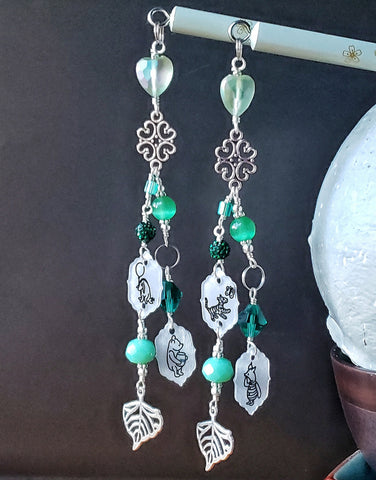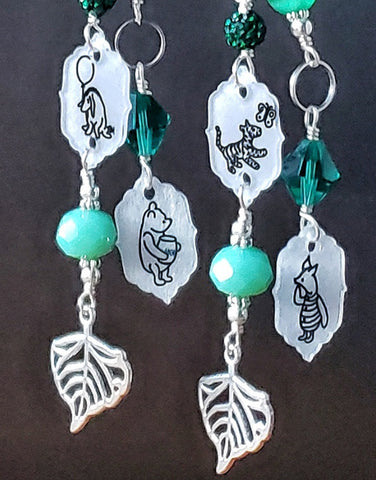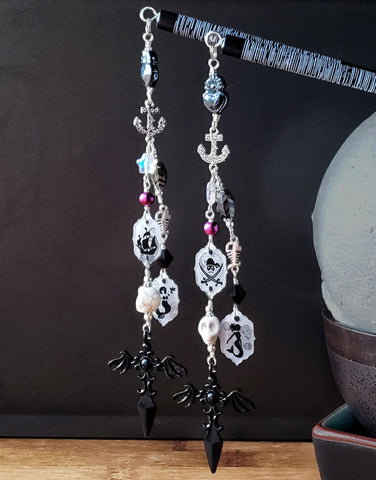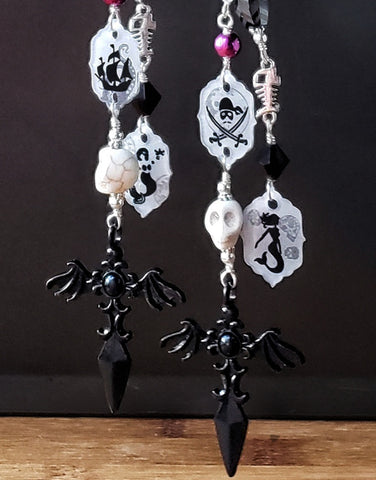Playing with Cement is so much fun!
I love using Cement for craft projects. It's versatile, cheep, and best of all easy. In fact it's so easy you'll wonder why you have not given it a try until now.
Today I'm going to show you how to make these cool tea-light holders.

Materials


1) Portland Cement: There are quite a few differences between cement and concrete. If you want to know them all I would take a visit to Americas Cement Manufacturers Associations website. However the big point you need to know for doing this project is that it dose not have rocks in it. Also the bags come in 42 pounds and 94 pounds so you will want help moving them. Don't hurt yourself.
2) A disposable container to mix the cement in. I have two types shown in the picture above. The clear plastic container can be reused. These are for smaller batches if you want to make a larger batch a larger container will be necessary. I got mine at a yard sale for 25 cents for the clear one and 60 cents for the 4 paper buckets.
3) Soft plastic or silicone molds, 2 sizes. You can use a hard plastic or metal mold, it's just more work and they might get stuck to the cement so you'll have to brake it to release it. The Larger size is for the main shape and the smaller is to make the well the candle sits in. I used some things I picked up at the Dollar Tree.
4) Something to stir with. I am using a paint stick I picked up at my local hardware store, but you can use just about anything even you hands. If you choose to use your hands please ware gloves. It's not because cement is toxic or anything like that, but it will suck the moisture out of your hands and leave them a total mess. I learned this one the hard way.
5) Sand Paper. I used 100 grit sand paper. I found a container of 20 sheets at the Dollar Tree. These will be used up so no need to use the expensive kind.
6) Water. You'll be adding this to the mix to make the Cement, in the sanding process, and for washing up.
7) Paint and Polyurethane. This last one is optional. You might want to leave it natural or you might want to paint the whole thing.
Once you have gathered all your ingredients it's time to begin.
1) Mix The Cement. Mixing cement is a lot like mixing cake batter, I know this is only helpful if you bake. Let me explain in detail. First put water in to your mixing bowl, quarter full or less. Then slowly mix in the cement till you get the consistency you want. This means put a little bit in and stir then put in a little bit more and stir some more... repeat till your happy with the result. Do Not just dump a large amount of cement into the bowl unless you want to make a large mess. You will end up with some parts well mixed, some parts still dry, part that is still mostly water, and splatters all over the place. Well that could be fun to, but not productive.
A couple of things you need to know when mixing cement. Portland Cement dose not dry it cures so it can be completely covered in water and still harden. So once you start with this project work until you are done. The other thing to know is the more water to cement you have the weaker your end product will be so make it as thick as you can for what you are working on.
This is what a thin, but still usable mix will look like. It's about as thick as cake batter. It pours smoothly and flattens out immediately.

This is a thick mix, it has the consistency of thick brownie mix. It will pour well, but you will need to use the scraper or spoon to help it along. In baking terms it would be a the soft picks stage. (It can actually be made thicker than this, but it becomes difficult to use for small projects)

2) Pour the Cement into your mold. Don't fill the mold completely you need to leave expansion room for when you put in the second mold (the one that creates the well). Just eyeball it you can always use a spoon to remove excess if you put to much in.
3) Gently Tap your mold on a hard surface for around a minute. You do this for two reasons. The First reason in to make sure the cement completely settles into all the nooks and cranes so you have a smooth and whole piece. The Second reason is removing the air bubbles. Air bubbles unless you have a lot of them will not harm your project, but they can be unsightly. I don't mind a few so I don't try to get rid of all of them, but the smoother you want your surface / sides / bottom to be the more you will want to work on this. If you get any bulges at the top that will not pop just from tapping try blowing on it. This usually works well.
4) Insert the second mold. If like me you are using a much smaller second mold then just push in into the cement until just about a cementer is left sticking out of the cement. At this point mine kept on popping back up so I put some rocks in it to keep that from happening. If you are using a larger second mold just push it in until your happy.
Two things to remember at this time. If the lip of your second mold gets covered in cement then it will make it difficult to remove, you will most likely need to chip away at the cement and possibly brake the mold to remove it, hence leaving a centimeter of space around the top. If you are using a second mold that is close to the same size as the first or close to as deep. Remember that the thinner the thickness of the cement is the less strength it will have. It's fine if you want something delicate looking, just remember that it will be delicate in reality as well. Plus if one area is significantly thinner than the others that will be it's weak spot and ware it will brake.
5) Leave it alone. If it's a small project like this one then you only need to let it dry/cure for a day. I think I only left this one alone for 20 hours.
This is what it looked like the next day. Note: I broke off the handle of a plastic measuring cup because the handle was to long and would have made the bottom of the well not even. However this could lead to harm to you or me if the plastic should hit exposed skin (I wore safety goggles so my eyes where safe) during the removal proses and you or I could later be cut on the sharp edges. If you are under 18 please don't do this. If you are over 18 well your an adult and if you want to risk life and limb that's your choice. Just don't say I did not warn you of the risks.

6) Remove the cement from both molds. Because the large mold was soft plastic I just turned it upside down and it slid right out. However the inside mold was made from hard plastic so I had to use some pliers to put it out. I was impatient (the first one I Attacked after only 12 hours) I cause a small amount of to the piece when removing the small mold, but the other 2 came out just fine (I waited till later that day).

7) Sanding the top. Once it is out of the molds you will need to sand the top. You'll notice it has sharp edges and scaling (more so in the picture of it still in the mold. I started sanding before I remembered to take a picture. To remove the scaling and ruff edges you will need to sand it down. Sanding is easy, but a little messy. To make it less messy get your piece wet (this gets rid of the dust problem, witch is really bad for you). Then just take some sandpaper (I use 100 grit) to it and sand in a circular motion. You will want to rinse it off several times to see how the progress is going. You don't need to use much presser and it will only take a minute or two. I do not recommend using an electric sander. Mostly because there is water involved and water plus electricity could make fore a very hair raising day.

I'm showing this in my kitchen sink because I was taking pictuers, but you really will want to do this outside with your garden hose. The grit that is produced will not be good for your drainage system.
8) Paint and Poly what ever part you want to. Once you are done with the first 7 steps you might deiced that Wow this is perfect the way it is. If that is the case then Yea! your done. However I took it one step further and painted and then polyurethaned the inside of the well because I thought it would look cool. One thing you need to know about painting cement is that it will suck up the paint really fast. This means you will need to do several coats, but they will dry quickly.
Tada! Your Done


You will notice that they all came out different colors. That is because they where all different batches of cement with differing amounts of water. If you make yours all from one batch they will be the same color. Also cement is not technically completely dry/cured for 30 days. Though the only practical difference is the color will change slightly. If you where poring a driveway you could drive on it after only 7 days.





























Comments